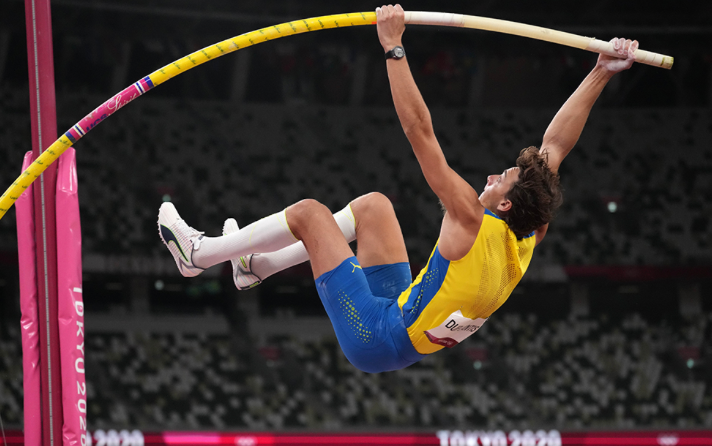Reaching for the Sky: A Rookie’s Guide to Pole Vaulting
- therookiereporters
- Jun 22
- 3 min read
In this series, we go through sports from every corner of the globe and break them down so that even complete beginners can follow along and get involved. Our goal is to make every sport fun and accessible for everyone.
Today, we are reaching high into the history and biomechanics of pole vaulting.

In the world of track and field, few events capture the imagination like the pole vault. A blend of speed, strength, precision, and aerial grace, the pole vault is more than just an athletic event - it's a defiance of gravity, a dance between earth and sky.
At first glance, the pole vault might seem simple; sprint down a runway, plant a pole, and launch yourself over a bar. But behind this seemingly straightforward action lies a complex sequence of movements and years of relentless training. Pole vaulting is one of the most technically demanding events in athletics, requiring not only explosive power and agility but also exceptional coordination and mental toughness.

Pole Vaulting has roots that go back from much earlier than the 19th century with evidence of pole jumping used in ancient Greece, Crete, and among the Celts - not as a sport, but as a means of crossing obstacles like rivers or marshes . However pole vaulting as a modern competitive sport did indeed develop in Europe, particularly in Germany and England, during the 19th century. For men, pole vaulting became part of the Olympic program at the first modern Games in Athens in 1896. At that time, athletes typically used solid wood poles, often made of ash or hickory. Bamboo poles, which were lighter and more flexible, gained popularity in the early 20th century and remained common until around the 1940s.The introduction of fiberglass poles began in the 1950s, revolutionising the sport. These poles, made from fiberglass and later carbon fiber composites, provided significantly more flexibility and rebound, allowing vaulters to reach greater heights and turning pole vaulting into the high-flying event we know today.
Pole vault requires a precise transformation of horizontal speed into a vertical lift. This is achieved with the help of the long, flexible fiberglass or carbon fiber pole - often over 5 meters in length. Beyond the physical and technical demands, the pole vault also carries a philosophical quality. It is a sport that celebrates risk and resilience. Every vault is a leap of faith - quite literally. Vaulters must commit fully to the motion, trusting their training, their pole, and their instincts. The bar is constantly raised, both metaphorically and literally.

The modern era of pole vaulting has given rise to extraordinary athletes who have elevated the sport to new heights, both in competition and popularity. Swedish phenomenon Armand "Mondo" Duplantis is rewriting history with every meet, recently clearing 6.28 meters, a height that once seemed impossible.
Pole vaulting is a growing sport around the world with a young generation looking up to names like Emmanouíl Karalís, with his soaring technique and charismatic presence, have brought renewed attention to the sport. Karalís, known for his fluid run-up and acrobatic style, has been a beacon for young Greek athletes and a reminder that the pole vault is as much an art as it is a science.
As technology advances and training becomes even more specialised, the future of pole vaulting looks bright - and high. From better materials in poles to smarter biomechanical analysis, athletes are finding new ways to push beyond perceived limits.
But at its core, pole vaulting remains what it has always been: a human effort to go higher, to test the bounds of physics and courage. In a world that often feels earthbound, the pole vault reminds us that with the right combination of strength, will, and flight, even the sky is not the limit.
Article written by Ioanna Ntontsef and Ellie Swain


